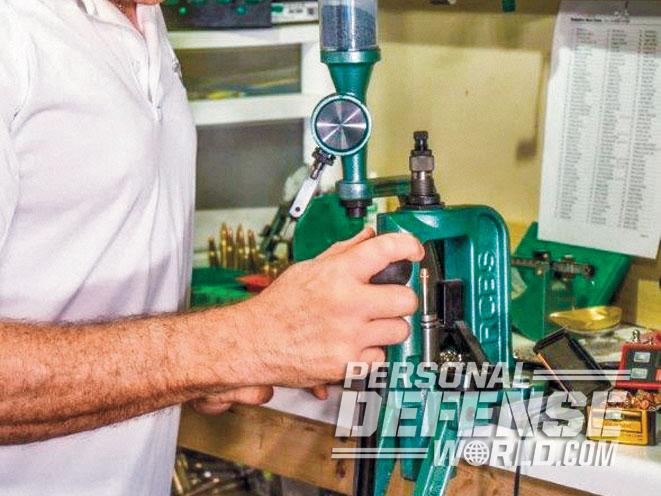There are a lot of reasons to get into reloading. Most of them come down to control—control over your access to ammunition, control over the power and accuracy of your rounds, and control over the cost of your shooting.
On a per-round basis, handloading can save you anywhere between 40 to nearly 70 percent depending on your choice of components. After gaining experience with reloading, you might want to move on to casting your own bullets, which can save you up to 80 percent per round. So, whereas you might have to spend a little over $200 for a 500-round brick of .45 ACP practice ammunition, by reloading, that same money will put almost 900 full metal jacket (FMJ) rounds into your ammo can. With reloading, you have control over your components. You can choose to buy hard-cast lead bullets instead of FMJs, which will let you load and shoot 1,500 rounds for about as much money as it costs to shoot 500 rounds of factory-made .45 ACP. That is a pretty compelling reason to roll your own ammunition.
Reloading is a simple process of sizing and priming a cartridge case, adding a powder charge to that case, and seating a bullet on the charge. But for such a simple process, there is a bewildering array of equipment for the novice reloader to choose from. Before you even try to sort through the choices, I recommend that you take some time to do a self-assessment of your interests, your space, and financial constraints.
Advertisement — Continue Reading Below
So think about your situation and let your needs drive your reloading equipment choices. The first thing to think about is space. Where will you reload? Typically, you will need a space where you can install a solid bench to mount reloading presses and associated gear. So, do you have a dedicated place for a reloading bench? The space can be quite small. Even in an apartment, you can turn a small closet into a reloading room with a little ingenuity.
Reloading Press Success
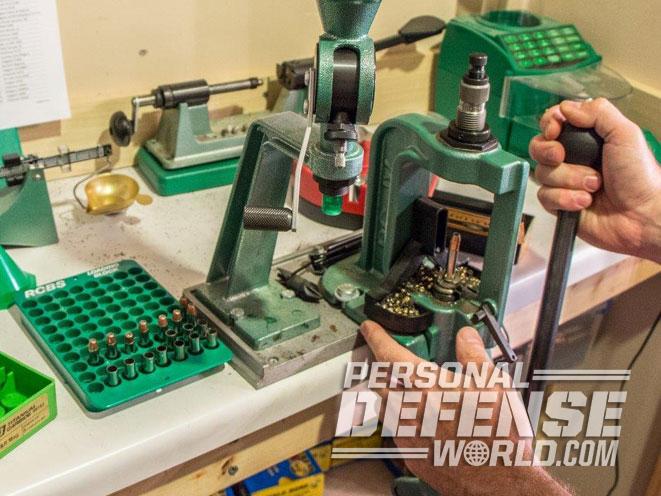
The next thing to consider is what kind of shooting you do and how much. The more rounds you expect to shoot, the more you will eventually feel the need for a progressive press or a turret press. But, despite the fact that you may eventually migrate to a higher-production-volume press, I recommend getting a good single-stage press as your first press.
Advertisement — Continue Reading Below
RELATED STORY: 9 Progressive Presses To Maximize Ammo Production
When you are starting out, learning to make quality reloads is more important than developing the ability to turn out quickly a lot of poorly made ammunition. A single-stage press is a much easier platform with which to learn reloading than a progressive press. And you will always have a need for a single-stage press. Single-stage presses are simple to use and are relatively inexpensive. Excellent presses can be had from any of the major manufacturers for between $100 and $200. And, regardless of the brand, they are so rugged that your great grandkids will be reloading with it in the 22nd century. So get one and learn to make good ammo. It may be all the press you ever need, but if after a while you find that you can’t keep up with your shooting volume, think about turret or progressive presses.
I own four presses, and I use them all. Most of my high-volume reloading is done on either a Dillon 550B progressive press or on a Lee Turret press, but when I’m working up a new load, I do it on a nice compact RCBS Reloader Special-5 press. When I’ve settled on a load that performs as I want, I move it to either the progressive or the turret press. But there are another half-dozen specialty cartridges, like the .32 French Long and the .45 Auto Rim, that I don’t load enough of to justify configuring the progressive or the turret. I just load those on the RCBS single-stage press. I still use the first press I ever bought.
Advertisement — Continue Reading Below
Dies, Scales & Powder
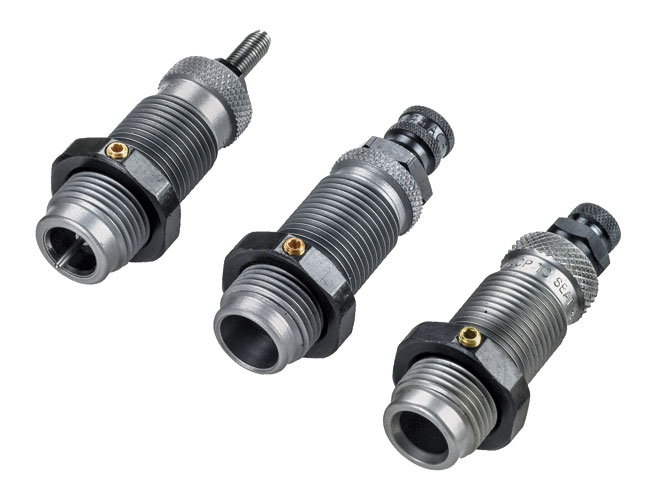
Along with a press, you’ll need a set of reloading dies for each caliber you plan to load. If you are loading handgun ammunition, a good option is carbide dies. These are by far your best choice, even though they cost a few dollars more than plain steel dies. Carbide dies eliminate the need to lubricate the cartridge cases before resizing, which really simplifies the reloading process. Some die sets come with the appropriate shell holder for the cartridge, while others do not. Be sure to check, and buy a separate shell holder if your die set doesn’t come with one.

Advertisement — Continue Reading Below
The next two essential pieces of equipment you need are a scale and a powder measure. These two things go together, but while the powder measure is important, the scale is absolutely critical. You cannot safely reload without a good scale. Digital scales are all the rage these days, and they are very convenient. They are also a bit pricey. Balance-beam scales are definitely old school, having been around for thousands of years, but they do the job. You can expect to pay anywhere between $50 and $150 for a decent balance-beam scale, and twice that for a digital model. I recommend starting with a $50 balance-beam scale. If you want to move up to a digital version, you’ll always have the balance beam as a backup in case the power goes out.
RELATED STORY: 9 High-Tech, Next-Gen Reloading Powders
Buying a high-quality powder measure is a good investment. You can get a decent powder measure for around $50, and you can get a really good one for just over a C-note. Hornady, RCBS and Lyman make excellent powder measures. I use an RCBS Uniflow measure, but you can’t go wrong with any of the measures made by the major reloading manufacturers.
Advertisement — Continue Reading Below
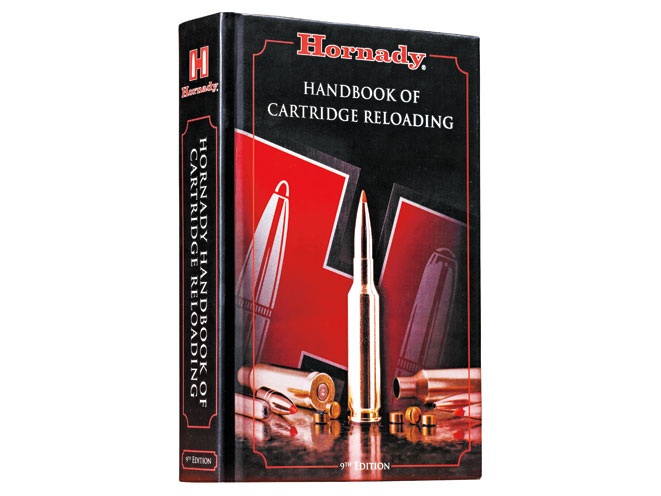
Along with gear, the other essential additions to your reloading setup are reloading manuals. Get one or two, read them and follow what they say. The major powder and bullet manufacturers all offer them. Many of the powder company manuals are available on the Internet. I own manuals from Speer, Hornady and Lyman, and I use each powder maker’s online tools frequently. One thing to avoid is load information passed on casually in chat rooms or on discussion boards. After gaining experience with reloading and with load testing, you’ll have the knowledge to determine if a casually recommended load is safe, given the powder’s burn rate and potential pressure in that case and bullet combination. But, until you have that knowledge, stick to loads in the manuals.
All-In-One Reloading Presses
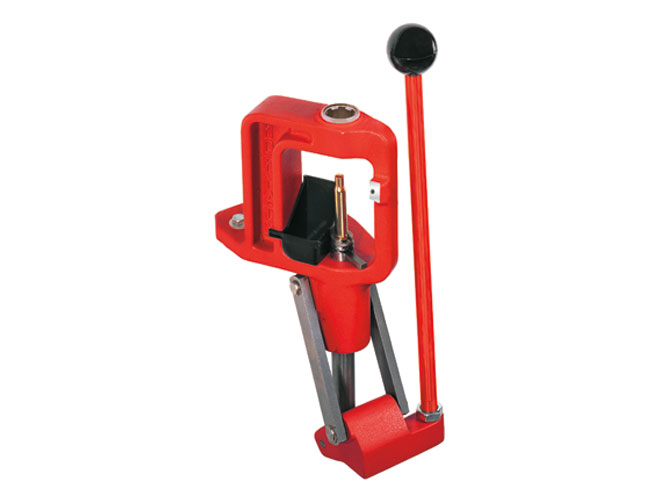
Advertisement — Continue Reading Below
A great option for the beginner is Hornady’s Lock-N-Load Classic Kit. The heart of the kit is a strong “O” press that uses Hornady’s Lock-N-Load bushing system. Rather than screwing your dies directly into the press, each die is mounted on an individual bushing. Just drop them into the press and give them an eighth of a turn to lock them into place. It makes changing dies fast and easy. The kit also comes with Hornady’s robust Lock-N-Load powder measure, a digital scale, a primer catcher, three die bushings, case lube, and much more. There are a number of other accessories that come with the kit. The most valuable by far is Hornady’s reloading manual. This is one of the best manuals on the market.
RELATED STORY: 9 Chronographs To Help You Fine-Tune Your Handloads
Reloading is not difficult. With a little gear and the right components, you can easily take control of your ammunition supply.
Advertisement — Continue Reading Below
FOR MORE INFORMATION
Dillon Precision
dillonprecision.com; 800-223-4570
Hornady
hornady.com; 800-338-3220
Advertisement — Continue Reading Below
Lyman Products
lymanproducts.com; 800-632-1699
RCBS
rcbs.com; 800-379-1732
